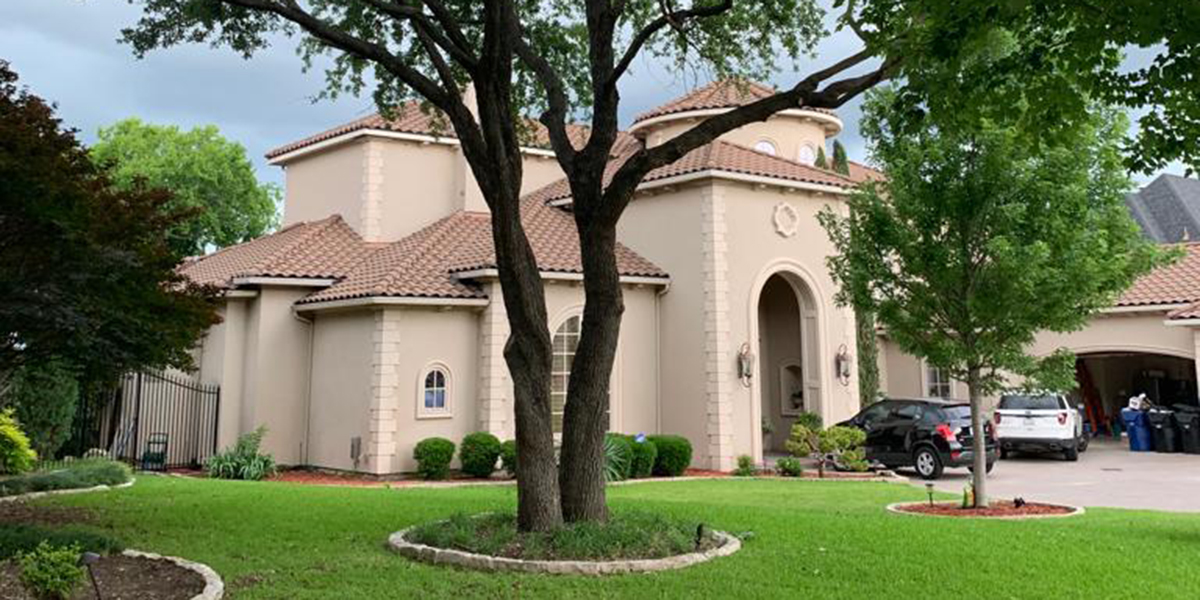
“How far apart should I plant trees?” Budding gardeners, tree lovers, and those new to landscaping often ask this question. There is no set answer because each tree is unique.
However, general guidelines exist for planting, and following those guidelines ensures healthy growing trees. For optimal results, know why you are planting the trees. A single tree planted for appearance requires different spacing than an orchard.
The size of the tree, whether you want shade or fruit, and the layout of your property dictate the distance between trees. Always speak to a professional Richardson tree service company if you have specific questions. In the meantime, we’ll go over the general guidelines.
Basic Space Requirements
The basic space requirements of a tree depend on its size. Trees require the following spacing for optimal health and shade:
- Small trees must be at least 10 feet apart.
- Space medium trees around 20 feet.
- Large trees need at least 30 to 50 feet.
- Plant giant trees or aggressive species at least 100 feet apart.
Tree size affects the basic requirements you need, but consider the variables when planting. Fruit trees, for example, require different spacing depending on the type.
Some fruit tree spacing is as follows:
- Plant citrus trees at least eight feet apart.
- Apple trees require 30 to 35 feet for optimal fruiting.
- For plum trees, consider 15 to 20 feet
- Sweet cherries require 35 to 40 feet.
Fruit trees prefer closeness to ensure thorough pollination. Trees use pollination to provide maximum amounts of fruit and growth. Too close, however, and the trees compete for resources.
How Far Apart Should I Plant Trees to Inhibit Competition?
Many people assume you must space trees far apart to inhibit competition. This assumption is not necessarily the case.
Keep trees far from utility lines and buildings to discourage destructive growing patterns. Otherwise, you can incorporate relatively close spacing.
Water
As a rule of thumb, tree roots spread to three times their mature height. Trees gather necessary resources from an extensive range with this far-reaching root system. Water your trees thoroughly or set up an irrigation system so your trees won’t compete for nutrients.
Light
Trees will compete for light. You can weaponize this fact by planting trees close together to force specific growing traits. Consider this step when your goal is to create shade.
The close trees grow tall, quickly creating a shady environment because there is nowhere else for them to grow. This technique is not harmful, though there are some downsides.
If a tree dies, it opens the wall to wind damage, and the trees must grow to close it. Planting more trees is also more expensive than planting fewer trees. However, the benefits outweigh the drawbacks if you’re looking for shade.
Other Resources
Trees communicate with their network through their roots. They help each other fight disease and pests and benefit each other overall. As long as each tree has enough space for its largest roots, planting them closer together strengthens them.
Standalone trees do not have this beneficial network. They also require more pruning, which opens wounds that can affect tree health. They take longer to produce shade and may not receive healthy pollination.
For More Information on Spacing Between Trees, Contact Urban Arborist
Tree spacing takes thought and consideration but is a simple task. For more information, read up on subsidence caused by trees.
Do you need a more in-depth answer to the question, “How far apart should I plant trees?” Contact Urban Arborist for personalized help.
To receive a free estimate in Richardson, TX, call us today at (214) 674-6709.
